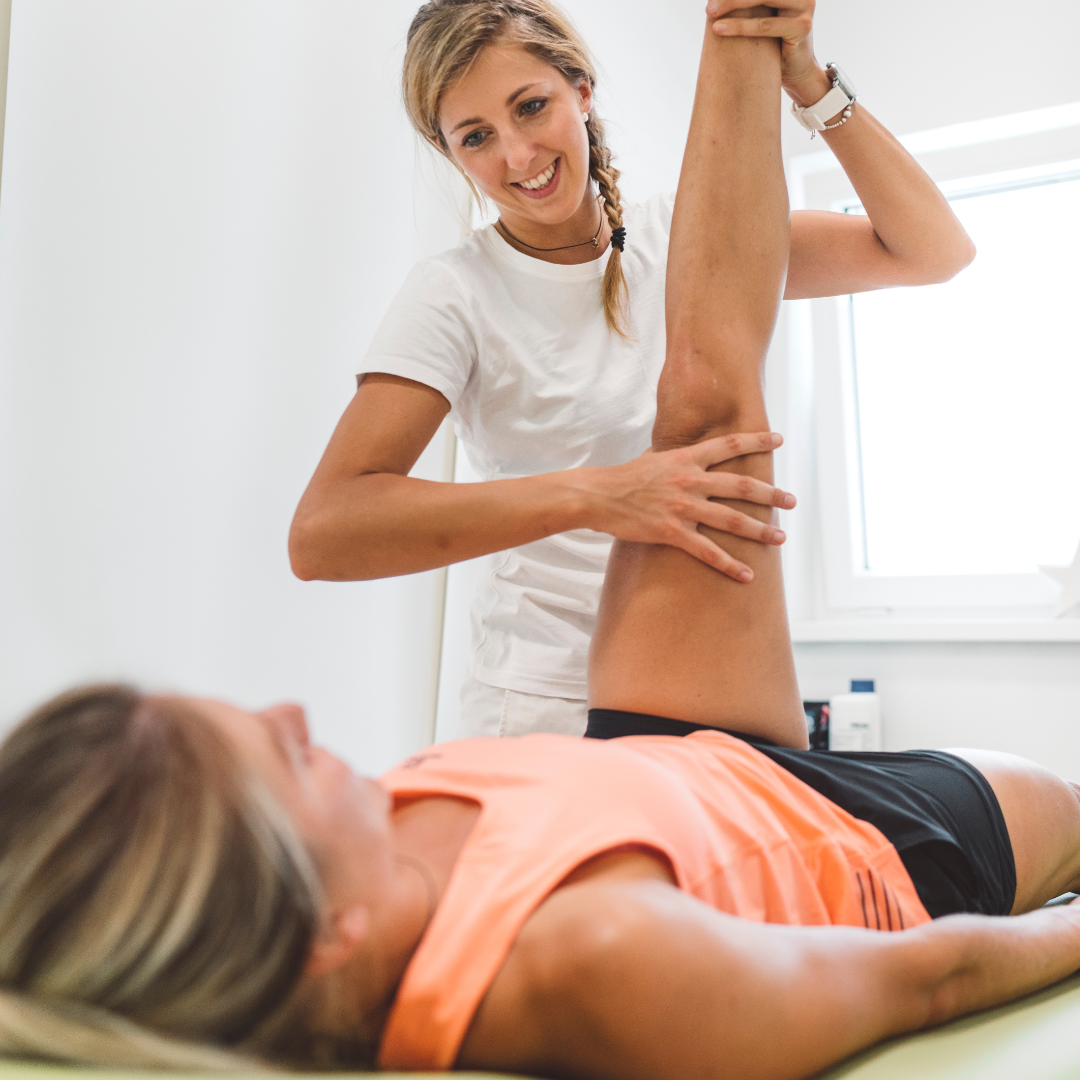
Physio for Knee Pain
Treatment
Expert Physiotherapy for Knee Pain
Knee pain can make everyday activities – walking, climbing stairs, running, or even getting up from a chair – feel difficult and frustrating. Whether you’re experiencing ligament injuries (ACL, MCL), meniscus tears, patellofemoral pain syndrome (runner’s knee), osteoarthritis, or pain related to overuse and sport, our evidence-based knee rehab can help restore movement, stability, and confidence.
At Vitalis Physio, we specialise in the assessment, diagnosis, and rehabilitation of knee injuries. We use a hands on approach with soft tissue release and dry needling but at the heart of our knee strategy is exercise and strength based rehab.
The Knee - Our Approach
We deliver structured, individualised treatment plans that target the root cause of pain. Our approach focuses on:
Comprehensive assessment of your knee structures, identifying the structure at the centre of your symptoms as well as knee stability, lower limb biomechanics and lower limb muscle strength
Progressive rehabilitation programmes tailored to the stage and type of injury
Strength and conditioning of muscles that support the knee for long-term outcomes
Evidence-backed protocols for conditions such as ACL rehab, meniscal injuries, and patellofemoral pain
We integrate best-practice rehab strategies for complex conditions, ensuring each plan is individualised for long-term recovery.
The type of knee problems we can help with
ACL injuries (especially in younger athletes)
MCL sprains
Meniscus tears
ITB pain
Postero-lateral corner instability
Patellofemoral pain syndrome / anterior knee pain
Patellar tendinopathy (jumper’s knee)
Knee osteoarthritis
How we treat knee pain at Vitalis
How the Hip Influences Knee Pain
Many people are surprised to learn that the hip plays a big role in knee health. When the hip muscles, especially the glutes are weak or not working in balance, the thigh bone can rotate or drift inwards. This extra movement places more stress on the knee, often leading to problems such as patellofemoral pain (runner’s knee), ACL injuries, or flare-ups of knee arthritis. At Vitalis Physio, we carefully assess how your hips and knees work together. By improving hip strength, stability, and movement control, we can reduce pressure on the knee, ease pain, and support a safer return to your daily activities, work, or sport.
How the Foot and Ankle Influence Knee Pain
The way your foot and ankle move has a direct impact on your knees. If your foot rolls inwards too much (overpronation) or doesn’t absorb shock well, extra stress can travel up into the knee joint. Similarly, stiffness in the ankle after an injury can change how you walk, squat, or run, forcing the knee to compensate. These changes can contribute to conditions such as patellofemoral pain (runner’s knee), IT band syndrome, or even knee arthritis over time.
At Vitalis Physio we don’t just look at the knee in isolation. Our physiotherapists assess your whole lower limb — including foot posture, ankle mobility, and walking or running style — to identify hidden causes of pain. With tailored treatment, from strengthening, flexibility exercises, hands on therapy to footwear or orthotic advice, we help restore natural movement and reduce the load on your knees, so you can get back to moving with confidence. High level rehab is available to those who wish to return to running or impact activities. Our management of knee pain is built upon experience.

If knee pain is preventing you from enjoying your usual activities, Vitalis Physio can help. Our expert physiotherapists combine clinical expertise with the latest research to support your full recovery – from early rehabilitation through to return to sport or daily life.
Reliable Knee Physiotherapy in Oxfordshire
Email: info@vitalisphysio.com
Address: 1 Cuxham Road, Watlington, OX49 5JW
Phone: 07432 690233
Physiotherapy for Knee Pain
Frequently Asked Questions
-
Knee pain can come from injuries like ACL or meniscus tears, overuse problems such as patellofemoral pain (runner’s knee), or wear-and-tear conditions like osteoarthritis. A physiotherapy assessment helps identify the exact cause and best treatment.
-
Physiotherapy targets the root of the problem, not just the symptoms. At Vitalis Physio, we use a mix of hands-on treatment, exercise rehabilitation, and movement retraining to reduce pain, restore strength, and get you moving confidently again.
-
Weak or poorly controlled hip muscles can cause the thigh to rotate inwards, placing extra stress on the knee. Strengthening the glutes and improving hip control helps reduce knee pain and prevent injuries.
-
Yes — issues like flat feet, overpronation, or ankle stiffness can change how your leg moves and increase load on the knee. At Vitalis Physio, we check the whole leg, from the foot to the hip, to treat hidden causes of pain.
-
Not always. Most knee pain can be diagnosed through a thorough physiotherapy assessment. Scans are only needed if we suspect a serious injury or if symptoms aren’t improving with treatment.
-
Recovery depends on the type of injury. Minor strains may improve in a few weeks, while ligament injuries or arthritis management may take months. With the right programme, most people see steady progress in pain and function.
-
Research shows that structured physiotherapy can reduce pain and improve function in conditions like meniscus tears or osteoarthritis, helping some people avoid or delay surgery. Physiotherapy prior to knee surgery is also helpful.
-
Exercises that build strength in the hips, thighs, and calves, combined with balance and movement control drills, are usually most effective. Your physiotherapist will design a program tailored to your condition and activity goals.
-
Yes, in fact, the right type of exercise is one of the best treatments for knee pain. We’ll guide you through safe, progressive movements that strengthen your knee without aggravating symptoms.
-
We combine expert clinical assessment with the latest research to deliver effective, individualised care. By addressing the whole leg, hip, knee, and foot, we help you achieve long-term recovery, not just short-term relief.



